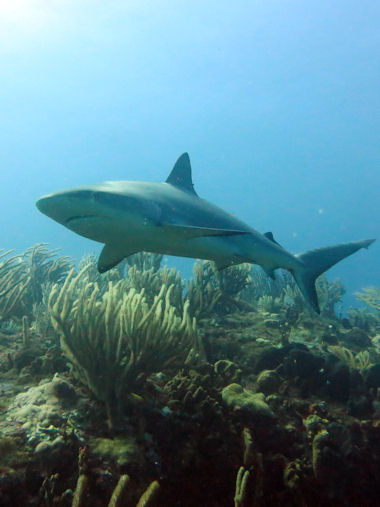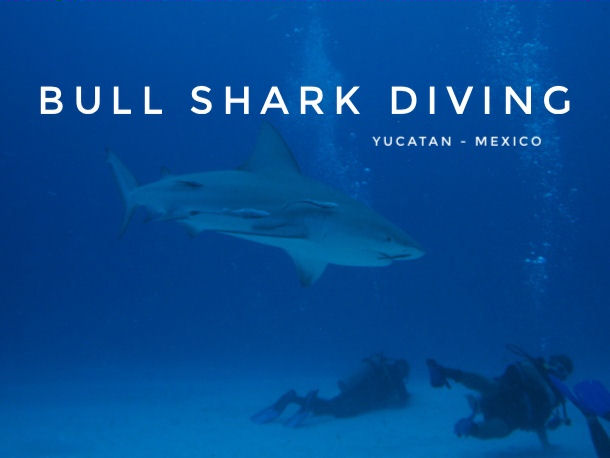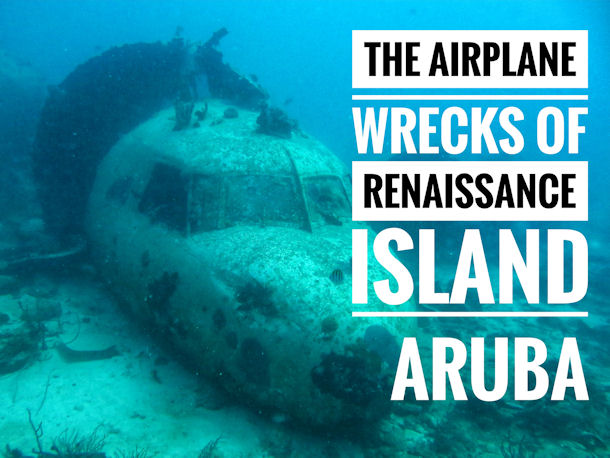by Steven Blum
Diving in St. Maarten
Absolutely jaws dropping!
Shark diving in the Caribbean off Sint Maarten
|
|
A close encounter with a shark is without a doubt one of the most unforgettable experiences you can have. Around the Caribbean island of Sint Maarten, these fascinating predatory fish can be found just about everywhere. The area is one of the richest waters for shark spotting in the world. With a little luck, you can meet dozens of nurse sharks or perhaps the elegant Caribbean reef shark during a dive, but that’s not it; you can also come across ground and tiger sharks.
|
|
Wake up in the Netherlands, hop across the border to dine in France and return to the Dutch shores in the evening? While this is geographically impossible in Europe, it’s only a stone's throw when you’re on St. Maarten in the Caribbean. The 96-square-kilometre island is completely unique in that it’s the only place in the world where there’s an actual border crossing between France and the Netherlands (if you didn’t know, in Europe, Belgium divides the two countries). While the north of the island – Saint Martin - (52 sq km) belongs to the French department of Guadeloupe, the southern part - Sint Maarten - (37 sq km) is part of the Dutch Antilles, to which Aruba, Bonaire and Curacao also belong. This makes St. Martin/St. Maarten the smallest piece of land in the world administered by two nations. And it has been like that for 350 years.
|
|
Imagine you’re lying on a beach and a landing airplane flies just meters over your head.
|
|
St. Maarten is best known among aircraft fans for the legendary Maho Beach, which is located right under the approach corridor of Princess Juliana Airport. There’s essentially nowhere else in the world that you can get as close to landing planes as this. It feels as if you could jump up and touch them. The planes cross the beach at a height of about ten to twenty meters. Countless bathers wave to the jets during the landing approach. In order not to miss a big plane, there is also a surfboard-cum-sign at a local beach bar that lists the daily times of all the landings. Daring adrenaline junkies stand directly in the exhaust jet of the planes as they ready to take off. Even people who are not standing directly behind the aircraft can barely stay upright.
|
|
If you like sharks, you can have a lot of fun diving off the coast of St. Maarten
|
|
An encounter with a shark promises a very particular kick of adrenalin and excitement. This animal is considered a silent killer of the darkest depths: a brainless, bloodthirsty eating machine. During a dive off St. Maarten, you can get very close to these elegant predators and will quickly notice that the animals are actually very calm, very curious and not aggressive in the least.
|
|
Caribbean reef sharks and nurse sharks are in particular abundance here, but you can also come across large barracudas, stingrays, eagle rays and sea turtles, all of whom are quite common in the clear blue waters around St. Maarten and appear to be very comfortable here. Most of the island’s waters are protected by environmental authorities, including the Dutch Nature Foundation and the French Nature Reserve.
|
|
A good alternative for crusaders - the Scuba Fun Dive Center near the cruise terminal
|
|
We chose the Scuba Fun Dive Center for our underwater excursions, a dive resort located in the Great Bay Marina in Philipsburg. Especially for crusaders who want to book individually and dive in small groups, the base offers a great alternative to the usual mass handling of big cruise companies. The groups consist of a maximum of six people: we even had the luck to dive with just two other people plus our guide. I felt a little sorry for the divers of an AIDA group, twelve of whom were guided through the reef in a goose march.
|
|
It’s only a short five-minute walk from the cruise ship terminal to the base. Turn left and follow the main road to Chesterfields Restaurant. The dive center is located on the right corner in the same yellow building.
|
|
Diving at Man of War Shoal Marine Park
|
|
There are almost 50 dive sites off St Maarten. Visibility ranges from 30 to 45 meters. Scuba Fun Dive starts offers daily excursions to the dive sites in the morning and at noon, with its most frequent tours taking place at the nearby Man of War Shoal Marine Park. The dive sites are easy to reach and the journey time is rarely more than 15 minutes.
|
|
The protected area at the southern end of the island is 31 square kilometers and was founded in 2010. Rich coral blocks mingle with sandy areas bordered by reef formations. There are boulders, caves and canals, as well as shipwrecks that serve as artificial reefs. The Proselyte Reef, where a Spanish warship sank in 1801, is a particularly popular dive site. Numerous artifacts such as large anchors, cannons, hoops, cannonballs and pottery can still be found here.
|
|
Our first dive site was called Shark Hotel, and the name says it all. We were barely submerged when our first big reef shark comfortably glided over the sandy seabed. Big barracudas came close, much closer than I am used to from other dives. Our guide later explained that shark feeding was carried out at this dive site years ago, but it has not been practiced for a long time.
|
|
The ground at the Shark Hotel is covered with gorgonians, horn corals and fan corals that sway gently in the current. In between this underwater playground swim pearl, honeycomb grouper, and porcupine fish, alongside filefish and colourful parrotfish. Large lobsters hide in the reef’s crevices, while blennies sit on the isolated brain corals and guard their clutches. Stingrays bury themselves, camouflaged by the seabed, with only small holes in the sand revealing them. Short-nosed mackerels roam the open waters.
|
|
In 2013, the first ecological assessment of the Man of War Shoal Marine Park was carried out. It was found that only three years after the establishment of the reserve, the fish population, including butterfly fish, grunts, snappers and parrotfish, had increased by 10% to 20%. There was a marked increase of 20% amongst groupers, especially Nassau groupers. This is probably due to the ban on fishing.
|
|
The presence of sharks is a good sign
|
|
Sharks help prevent disease outbreaks within fish stocks by eating sick animals before they can infect the rest of the swarm. This means that encountering a large number of sharks during a dive is an indicator of the continued stability and healthy environment of the marine ecosystem.
|
|
Sharks are curious animals
|
|
At the Shark Hotel I was able to observe numerous Caribbean reef sharks (Carcharhinus perezi), all the way from small baby sharks to specimens measuring over two meters long. Occasionally, six big predators would circle us at the same time. The sharks seemed to be intrigued by the presence of three divers and watched on in curiosity at the strange hustle and bustle in their stomping ground. They often came very close, swimming directly towards us, only to turn off again shortly before reaching our location. However, this behavior has nothing to do with being aggressive. It is normal for these animals to approach unknown objects at a short distance and then turn around again.
|
|
|
 |
|
Like other reef sharks, Caribbean reef sharks are often observed unfolding their jaws and "yawning". But again, it is not threatening behavior. The shark is only trying to adjust its jaws after having eaten. Another interesting behavior is their gill-spreading, where they allow water to be pressed through their gills in order to clean their interiors of lingering fish remains.
|
|
Male Caribbean reef sharks grow up to two meters long, while females are slightly larger, reaching up to three meters. The animals are bronze-colored on their sides, their backs’ brownish to brown-grey, and their belly white.
|
|
In the most part, the sharks aren’t dangerous for humans. Accidents are known to have happened with this species, but if you do not crowd, corner or irritate them, you have little to fear. Such accidents usually occur because of the natural defensive reactions of these animals. When provoked to attack, it is usually loud sounds, quick or nervous movements, or glittering, metal objects that usually trigger the strike.
|
|
The second dive site is only a few meters away and is called Maze – or the labyrinth. As the name suggests, you dive along the reef formations as though following a maze. Gorgonians, horn corals and fan corals dominate the area as well. On some of them, you can find flamingo tongues (Cyphoma gibbosum) of the cowry sea snail family grazing.
|
|
Of the bigger fish here, I also met Caribbean reef sharks, large barracudas and American stingrays. At one rock formation we came across the path of a small nurse shark.
|
|
Atlantic nurse sharks (Ginglymostoma cirratum)can be found in the area of the West Atlantic and the Caribbean between Rhode Island and Brazil. At birth they are barely thirty centimeters long, but in the course of their lives they reach sizes of over four meters. The adult animals are a sort of monochrome brownish color or grey-brown, while the young are usually peppered with black spots. This species bares little resemblance to the usual conception of sharks. Their cross section is almost circular and their long tail hardly bends upward at the end. Their chest area and the back are somewhat flat. Around the mouth, they have short beard-like threads that serve as tactile organs and help the sharks search for prey.
|
|
Altogether, nurse sharks move somewhat sluggishly and slowly. In general, they are peaceful animals, but are still considered potentially dangerous.
|
|
A shark diving conclusion
|
|
Swimming so close to these fascinating sea creatures is not only an exciting experience, but rather a moving encounter that will remain with anyone who dares to take the plunge long after the actual shark dive is over. Throwing caution to the wind and braving the often-overstated risks is well worth it. These magnificent beasts are a must see, teeth and all!
|
|
|
This could be intresting for you:
|
|

Meet The Bull Sharks
The real reason I went to Mexico was actually to photograph the fauna and flora in freshwater cavern areas far away from the ocean. Here in the jungle, there are colorful cichlids, tooth carp, catfish and tetrasa, all of which we know from our native aquariums, as well as blind cave fish and turtles. But I was drawn to the ocean when I was given the opportunity by a small group of adventurous divers to swim with bull sharks.
[read more]
|
|
|

The Airplane Wrecks of Renaissance Island (Aruba)
It is possible to find A Convair CV 240 lying some 300 meters off the shores of Aruba’s Renaissance Island at a depth of only 12 meters. This particular machine is said to have been confiscated at the end of the 1980s during a drug raid. Just a few breaststrokes away from the Convair wreck lies the remains of a former YS-11 passenger aircraft, one of three models employed by Air Aruba for scheduled flights in 1988. Following the bankruptcy of Air Aruba in October 2000, the YS-11 found a new purpose as an artificial reef.
[read more]
|
|
|
The opinions of other divers are both incredibly interesting and helpful to us. Through the experiences of other travellers, we have been able to uncover many useful tips and gain wonderful insight into other countries, as well as finding out about accommodation, the local community, and various activities, all in advance of arriving at our planned destination. Therefore, we would be very pleased to receive any other travel reports on the topic of diving & snorkelling in St Maarten, which we would gladly present here on our website. Simply contact us at info @ easydive24.de
|
|
|

